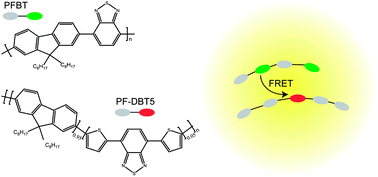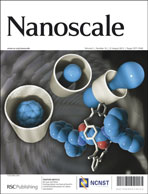Applications of polymeric semiconductors in organic electronics and biosensors depend critically on the nature of energy transfer in these materials. Important questions arise as to how this long-range transport degrades in amorphous condensed solids which are most amenable to low-cost optoelectronic devices and how fast energy transfer could occur. Here, we address these in disordered, densely packed nanoparticles made from green-light-harvesting host polymers (PFBT) and deep-red-emitting dopant polymers (PF-DBT5). By femtosecond selective excitation of donor (BT) units, we study in detail the internal structure-mediated energy transfer to uniformly distributed, seldom acceptor (DBT) units. It has been unambiguously demonstrated that the creation of interchain species is responsible for the limitation of bulk exciton diffusion length in polymer materials. This interchain Förster resonance energy transfer (FRET) becomes a preferred and dominant channel, and near 100% energy transfer efficiency could be achieved at high acceptor concentrations (>10 wt%). Side-chain carboxylic acid groups in functionalized polymer-blend dots slightly slow down the FRET rate, but it could not affect the Förster radius and FRET efficiency. These findings imply that a greater understanding of the role of interchain species could be an efficient approach to improve the cell efficiency.

You have access to this article
 Please wait while we load your content...
Something went wrong. Try again?
Please wait while we load your content...
Something went wrong. Try again?


 Please wait while we load your content...
Please wait while we load your content...